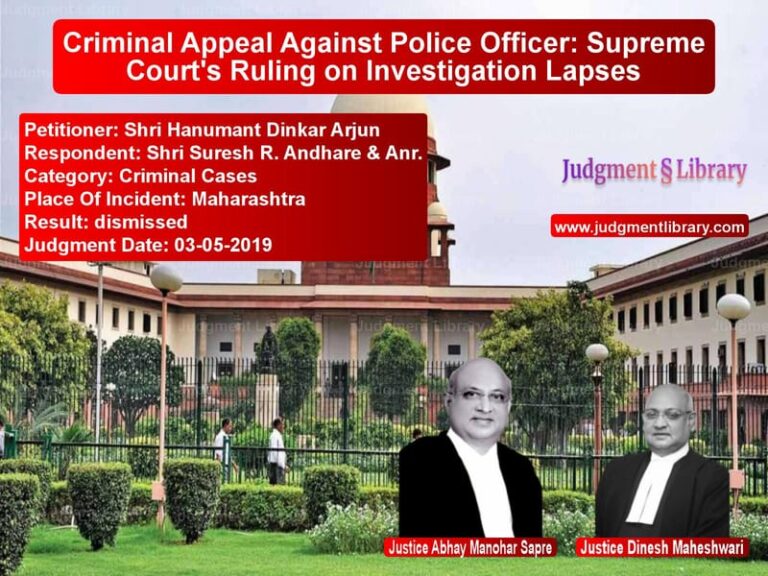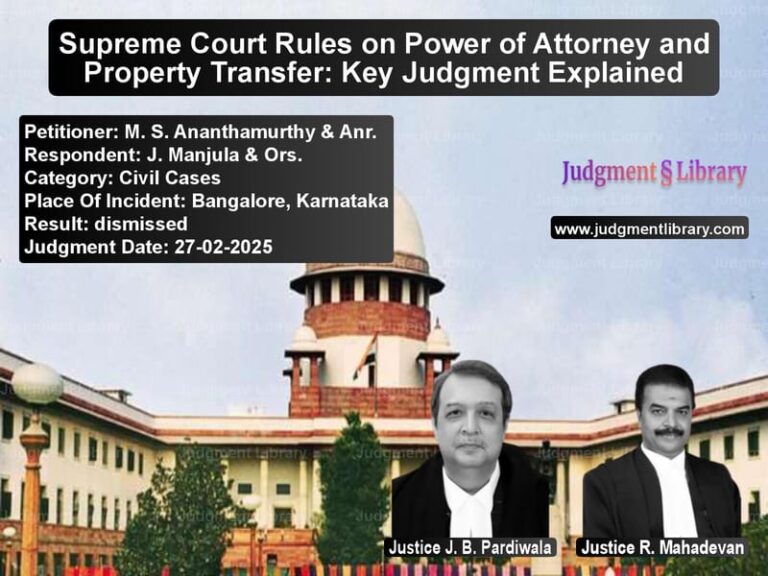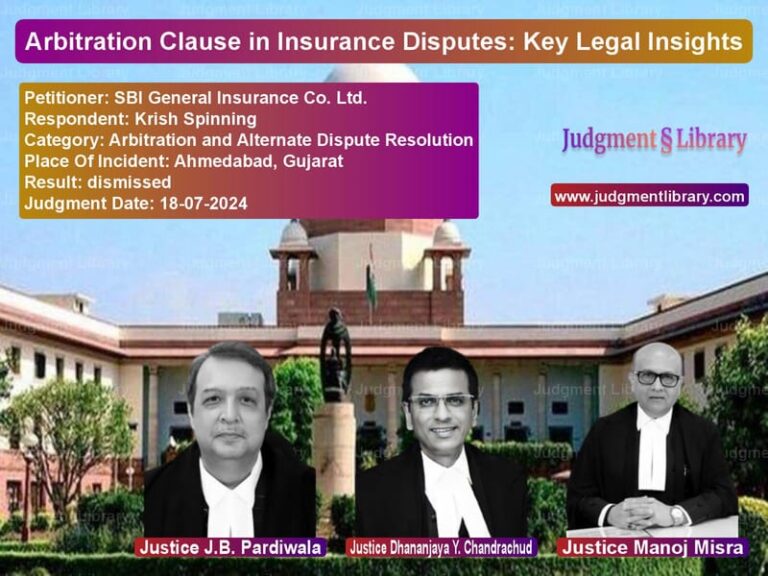Supreme Court Ruling on Land Acquisition in Haryana: A Case of Arbitrary Land Release
The Supreme Court of India recently delivered a crucial verdict in the case of State of Haryana & Ors. vs. Niranjan Singh & Ors., addressing issues related to land acquisition, arbitrary land releases, and the principle of equality under Article 14 of the Indian Constitution. The judgment examines whether the government’s decision to release certain lands while retaining others violated fundamental rights.
Background of the Case
The dispute originated from the Haryana government’s land acquisition process in Kurukshetra for the development of residential and commercial sectors. The Land Acquisition Act, 1894, was used to acquire land in phases:
- A notification under Section 4 was issued on April 21, 1987, covering 46.49 acres of land.
- After an inquiry under Section 5A, 10.83 acres were excluded.
- The award was passed on April 12, 1990, covering 34.61 acres.
- Subsequent to the award, 26.83 acres were released, leaving 7.78 acres in contention.
During this period, the Haryana government selectively released land, often in favor of influential persons, leading landowners whose plots were not released to challenge the acquisition before the High Court.
Petitioners’ Arguments
- The petitioners argued that their lands were arbitrarily retained while other similarly situated landowners had their plots released.
- They invoked Article 14 of the Constitution, contending that selective release violated the right to equality.
- The petitioners pointed to instances where influential persons had successfully secured land releases, while ordinary landowners were denied similar treatment.
- They contended that their land was no longer required for public purposes, as evident from large-scale releases by the state.
Respondents’ Arguments
- The State of Haryana justified its land retention, stating that the land was still required for urban development, road widening, and essential public utilities.
- The government contended that the release of land was done based on administrative considerations and did not amount to favoritism.
- For certain plots, the state claimed that infrastructure such as sewage lines had already been constructed, and reversing the acquisition would be against public interest.
Key Observations by the Supreme Court
The Supreme Court made several important observations:
- The state’s inconsistent approach to land acquisition and selective release of land pointed to arbitrary governance.
- The government had released land belonging to influential individuals while retaining land of similarly placed landowners without any rational basis.
- The Court held that the principle of equality under Article 14 was violated since similarly placed landowners were treated differently.
- The Supreme Court criticized the arbitrary land releases as a failure of the government to uphold fair governance principles.
- The judgment reinforced that state action must be consistent and justifiable on objective criteria, rather than based on discretion.
Judgment
The Supreme Court’s verdict was as follows:
- The High Court’s ruling was upheld in favor of landowners whose plots were not released arbitrarily.
- The acquisition process for CWP No. 16346/2013 was deemed unjust, and the land was ordered to be released.
- In contrast, appeals related to CWP No. 10452/2014 and CWP No. 6729/2013 were allowed, as the land was found to be necessary for public infrastructure such as sewage lines and road expansion.
- The government was directed to adopt a fair and transparent approach in future land acquisition matters.
Implications of the Judgment
This ruling has several significant implications:
- Prevention of Arbitrary Land Releases: The judgment reinforces that government authorities cannot selectively release land based on personal influence.
- Protection of Landowners’ Rights: The decision strengthens the rights of landowners to challenge acquisitions that lack fairness.
- Emphasis on Public Interest: The ruling ensures that infrastructure projects are not obstructed by arbitrary judicial intervention.
- Clearer Guidelines for Land Acquisition: The government must ensure that land release decisions are based on rational and transparent criteria.
Conclusion
The Supreme Court’s ruling in State of Haryana vs. Niranjan Singh is a landmark decision in land acquisition jurisprudence. By upholding fairness and non-discrimination in the state’s actions, the judgment reinforces the constitutional guarantee of equal treatment. This decision will serve as a guiding precedent for similar cases where landowners seek judicial intervention against selective acquisition policies.
Petitioner Name: State of Haryana & Ors..Respondent Name: Niranjan Singh & Ors..Judgment By: Justice M.R. Shah, Justice C.T. Ravikumar.Place Of Incident: Kurukshetra, Haryana.Judgment Date: 24-02-2023.
Don’t miss out on the full details! Download the complete judgment in PDF format below and gain valuable insights instantly!
Download Judgment: state-of-haryana-&-o-vs-niranjan-singh-&-ors-supreme-court-of-india-judgment-dated-24-02-2023.pdf
Directly Download Judgment: Directly download this Judgment
See all petitions in Property Disputes
See all petitions in Landlord-Tenant Disputes
See all petitions in Specific Performance
See all petitions in Damages and Compensation
See all petitions in Contract Disputes
See all petitions in Judgment by Mukeshkumar Rasikbhai Shah
See all petitions in Judgment by C.T. Ravikumar
See all petitions in partially allowed
See all petitions in Modified
See all petitions in supreme court of India judgments February 2023
See all petitions in 2023 judgments
See all posts in Civil Cases Category
See all allowed petitions in Civil Cases Category
See all Dismissed petitions in Civil Cases Category
See all partially allowed petitions in Civil Cases Category







